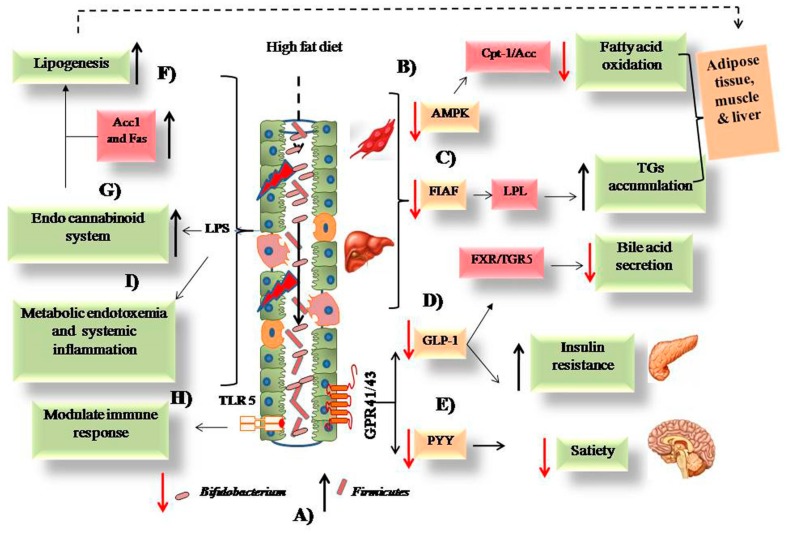Figure 1.
Possible mechanisms associated with the intake of high fat diet and obesity. (A) A high fat diet causes an alteration in intestinal microbiota from low to high Firmicutes and high to low Bifidobacterium. (B) The low expression of adenosine monophosphate kinase (AMPK) leads to decreased fatty acid oxidation. (C) Fasting induce adipose factor (FIAF) expression causes activation of lipoprotein lipase (LPL) that leads to triglyceride (TG) accumulation. (D) Low glucagon-like peptide 1 (GLP-1) leads to increased insulin resistance and decreased bile acid secretion from liver. (E) Decreased peptide YY (PYY) causes low satiety in obese host. (F) Increased lipogenesis via upregulated acetyl-CoA carboxylase (Acc1) and fatty acid synthase (Fas) enzymes. (G) The activation of endo cannabinoid loop via release of lipopolysaccharide (LPS) due to damages intestinal epithelium. (H) The modulation of intestinal immune response via toll-like receptor 5 (TLR-5) downstream signaling. (I) The systemic inflammation caused by inflammatory cytokines and bacterial. (Reprinted from Dahiya et al. [23]). Cpt-1 - carnitine palmitoyltransferase, GPR – G-protein coupled receptors, FXR – Farnesoid X Receptor.

